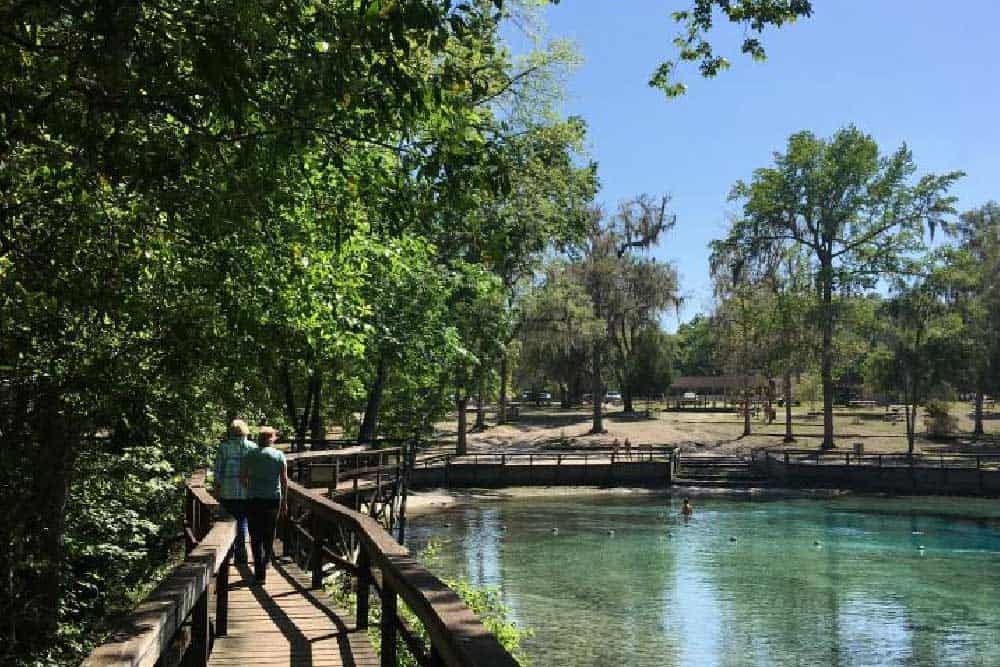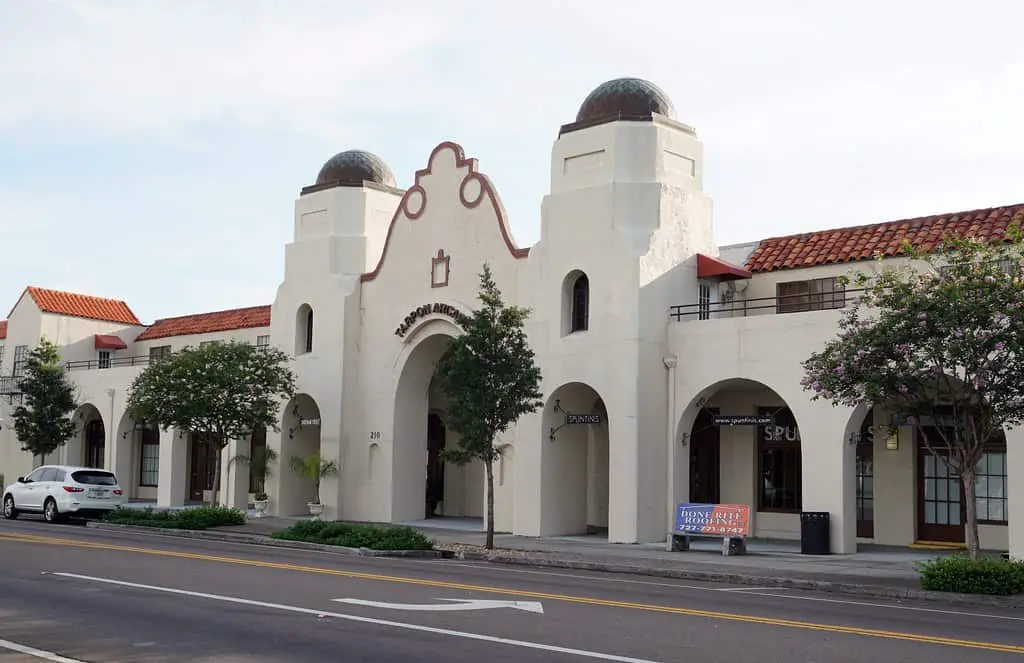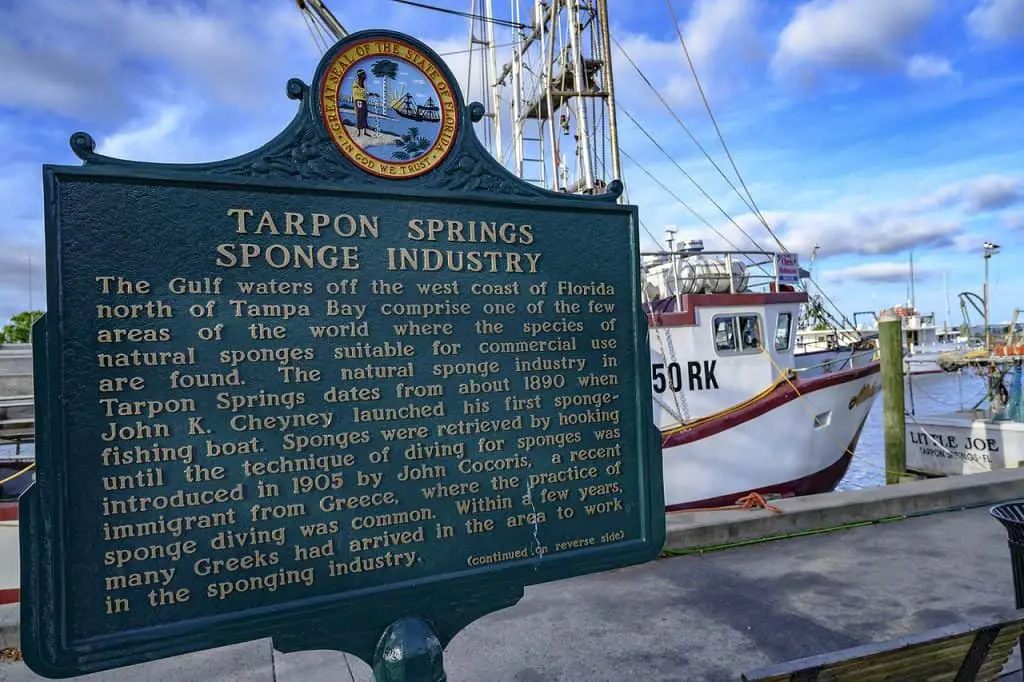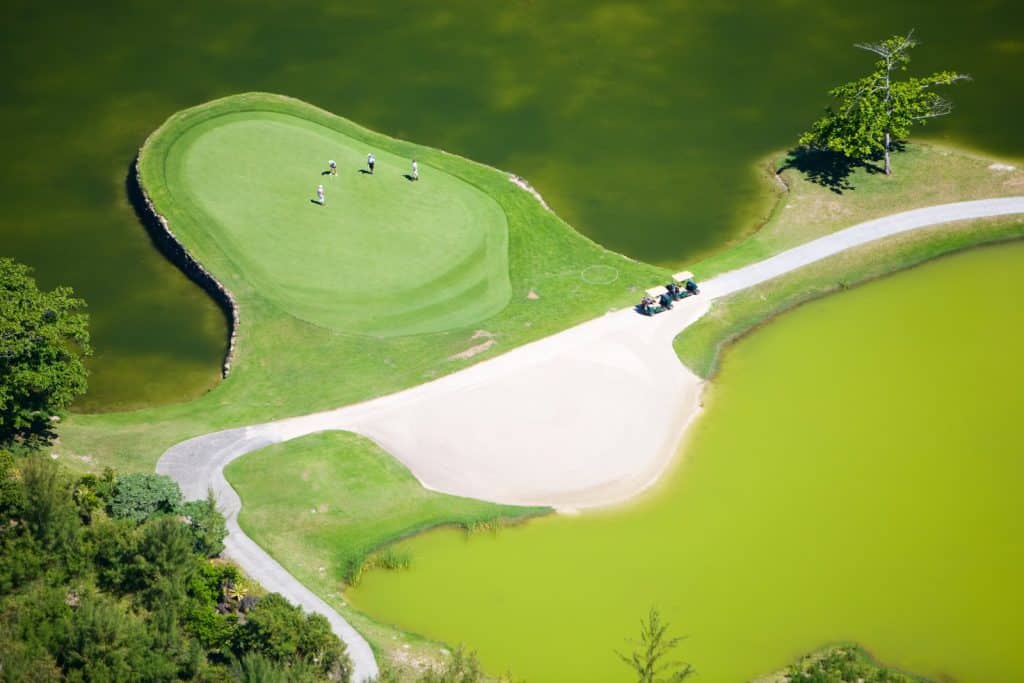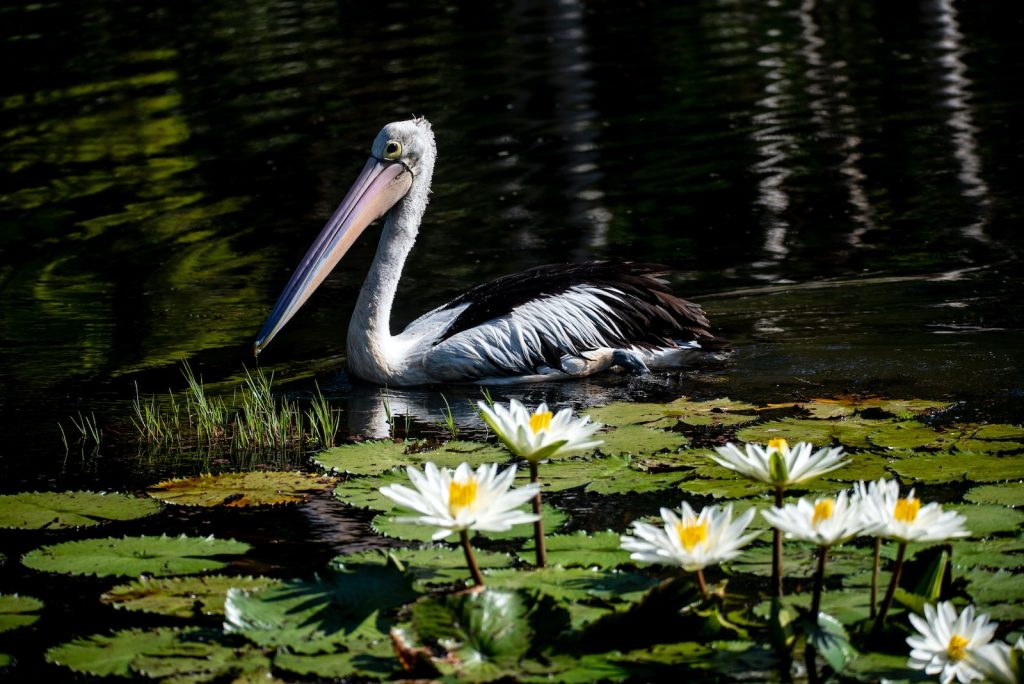Looking for a place to cool off this summer? Then look no further than Gilchrist Blue Springs State Park! This popular swimming spot is located in North Central Florida and is known for its crystal clear waters. Visitors can also enjoy picnicking, hiking, and camping in the park. So whether you’re looking to take a dip or just enjoy a scenic view, Gilchrist Blue Springs State Park is the perfect spot for you!
1. Location of Gilchrist Blue Springs State Park
Gilchrist Blue Springs State Park is situated in Gilchrist County, Florida. It is along the Santa Fe River. The park has been operated privately for several years. This great park was bought by the state of Florida for $5.2 million and began its operation to Florida’s dwellers as the number 175 state park on November 1, 2017. The park has a collection of six natural springs together with large second-magnitude springs that make approximately 44 million gallons of water per day. It has outstanding water that is very clear and sends out water along a shallow spring.
2. Activities to Do at Gilchrist Blue Springs State Park
There are so many fun activities that anyone visiting the Gilchrist Blue Springs State Park can engage in. You can enjoy paddling, snorkeling, and swimming which are very well known and present at the park. There are also pavilions and a concession stand that offers food and drinks services and paddling equipment for hire. Other very famous activities are available such as camping, hiking, nature walk and picnicking. You can never be bored when you visit the park as all the mentioned fun activities are available in the park.

3. Diving in Gilchrist Blue Springs State Park
Gilchrist Blue Springs State Park allows professional divers to use their park for diving. The divers need to be responsible and certified to gain access to the park. The open water divers are allowed up to 50 feet.
Read More: Key Largo Diving – These 5 Things Will Change The Way You Approach Your Dive
4. Swimming at Gilchrist Blue Springs State Park
The Gilchrist Blue Springs State Park provides swimming and scuba-diving in clearwater at a seventy-two-degree spring run. Suba-divers are required to register at the point of entry between the hours of 8 am and 3 pm. They are required to have an up-to-date certification card and a partner. Swimming or diving with the manatees is not allowed in the park at all.
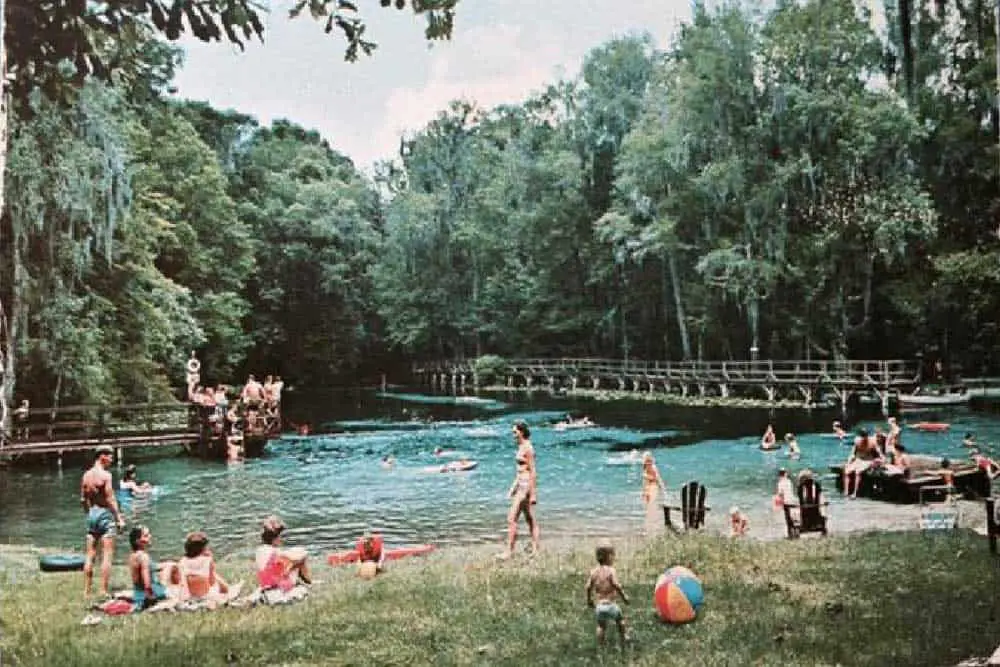
5. Pets in Gilchrist Blue Springs State Park
You can visit the park with your pets more so your furry friend. You can be accompanied by them at the Gilchrist Blue Springs State Park campground. Even though, they must be maintained on a leash that is no longer than 6 feet when they are outside of your vehicle. The mongrels are permitted at the campsites, but they are not allowed at the cabins. Visiting with your pet is free of charge.
The owners of the dogs must accompany them always when they are inside the park as roaming around the dogs and attending is not permitted. A collar on the dog’s neck should be worn with an up-to-date license fixed to it. A current certificate of rabies vaccine must also be provided. The owners of the mongrel are supposed to take good care of their pets more so the clean-up and the removal of their dog’s excrete. It is also important to be conversant with the restrictions that are there for the pets to avoid conflict with the caretakers of the park.
6. Manatees in Gilchrist Blue Springs State Park
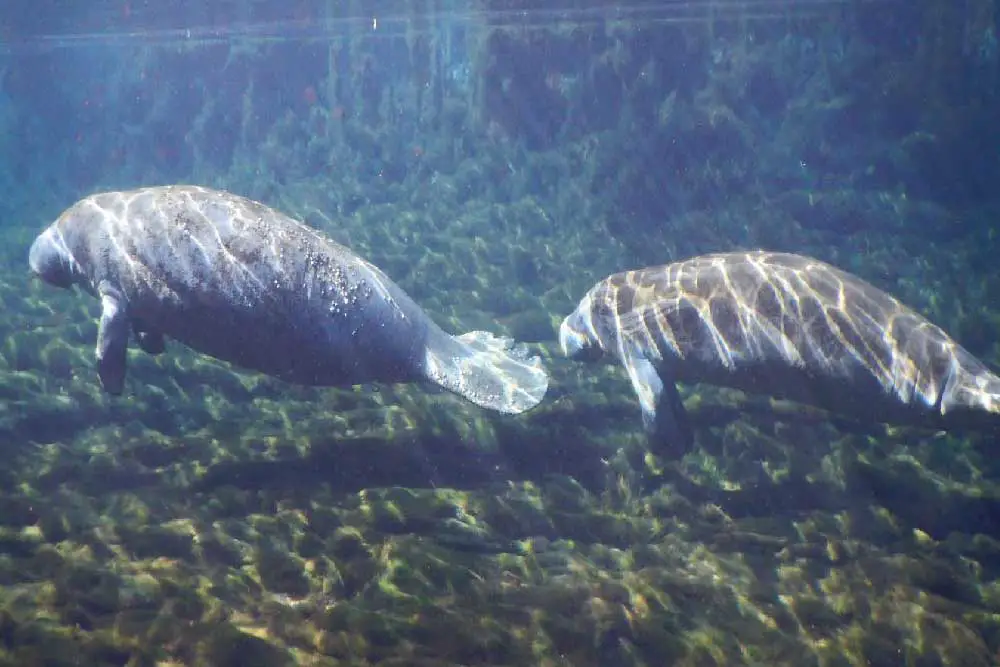
Manatees are present in Gilchrist Blue Springs State Park. This is because Gilchrist Blue Springs State Park is among North Florida’s several pristine natural springs. Florida springs have a constant of 72 degrees throughout the year. Thus, this is what makes the place a more famous and dwelling place to cool off during the hot summer season months and a dwelling place for manatees during the winter season.
Manatees are not dangerous marine mammals and they do not act as a threat to swimmers and divers. They are very curious creatures that love human interactions and are normally happy to relate to and be near humans. They are harmless to human beings.
The manatees are present in large numbers during the months of mid-November to March. During this time many manatees converge in the spring run to look for shelter from the cold. It is for sure an experience that is worth remembering as you watch many of these iconic creatures all in one place. Currently, the manatees were counted by the Gilchrist Blue Springs State Park staff to be 624 in number.
Feeding of the manatees is done by the use of “manatee cam” cameras at the Gilchrist Blue Springs State Park. This offers a live feed of the manatees in the park during the winter season.
The manatees are at their maturity in 3-5 years for females and 5-7 years for males. Their lifespan is around 65 years in captivity. They have a gestation of about 13 months and normally one calf is born.
7. Alligators in Gilchrist Blue Springs State Park
There are signs that the visitors need to be aware of alligators at Gilchrist Blue Springs. Even though, they are commonly at the spring run beyond the swimming barrier or in other sections of the park. It is always thought to be secure that any freshwater body of water in Florida is a possible place where alligators can be present.
8. Gilchrist Blue Springs State Park Camping Cost
The camping sites costs are different depending on the park. The prices range from $16 to $42 a night. Cabin costs are also different from $30 to $160 a night. The travelers pay a non-returnable fee of $6.70 as a reserve fee that is calculated as a booking fee and no fee for a night. The fee is collected at the same time of booking, whether you are making it via a call or through an online booking.
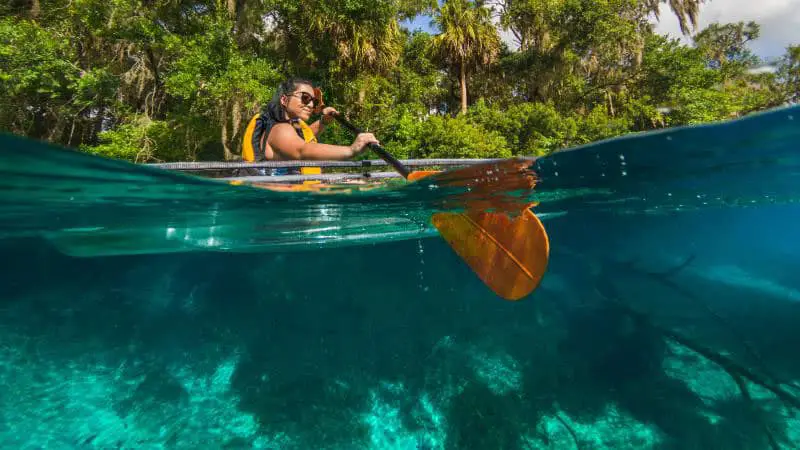
9. Gilchrist Blue Springs State Park Operating Hours
The park is open from 8 am to sunset a day, seven days a week, and 365 days a year. this translates that, if you are traveling in Florida during the winter season, the park will be closed at 530 pm. If you travel during summer, it will close at 8.30 pm. Therefore, the time that Gilchrist Blue Springs State Park closes is determined by the sunset times. So, it is important to have this in your mind when traveling to this fascinating Florida gem that is not very well known by many.

